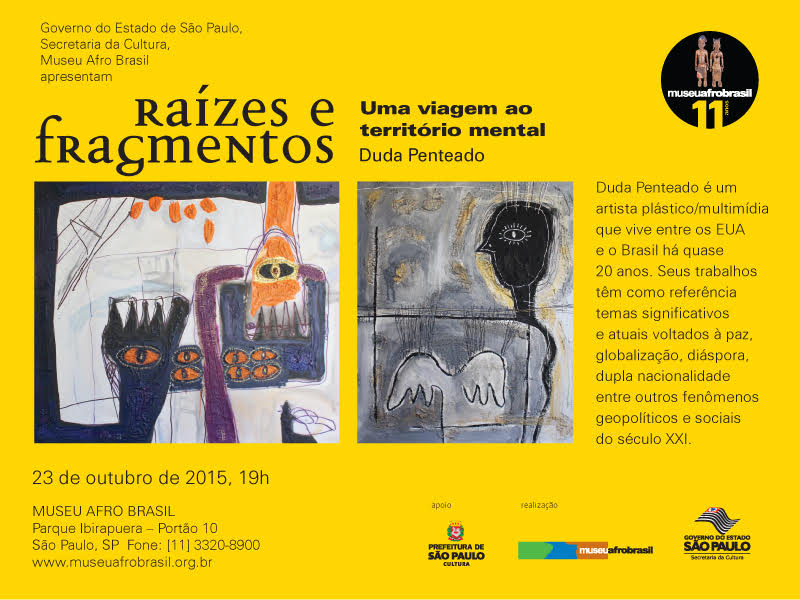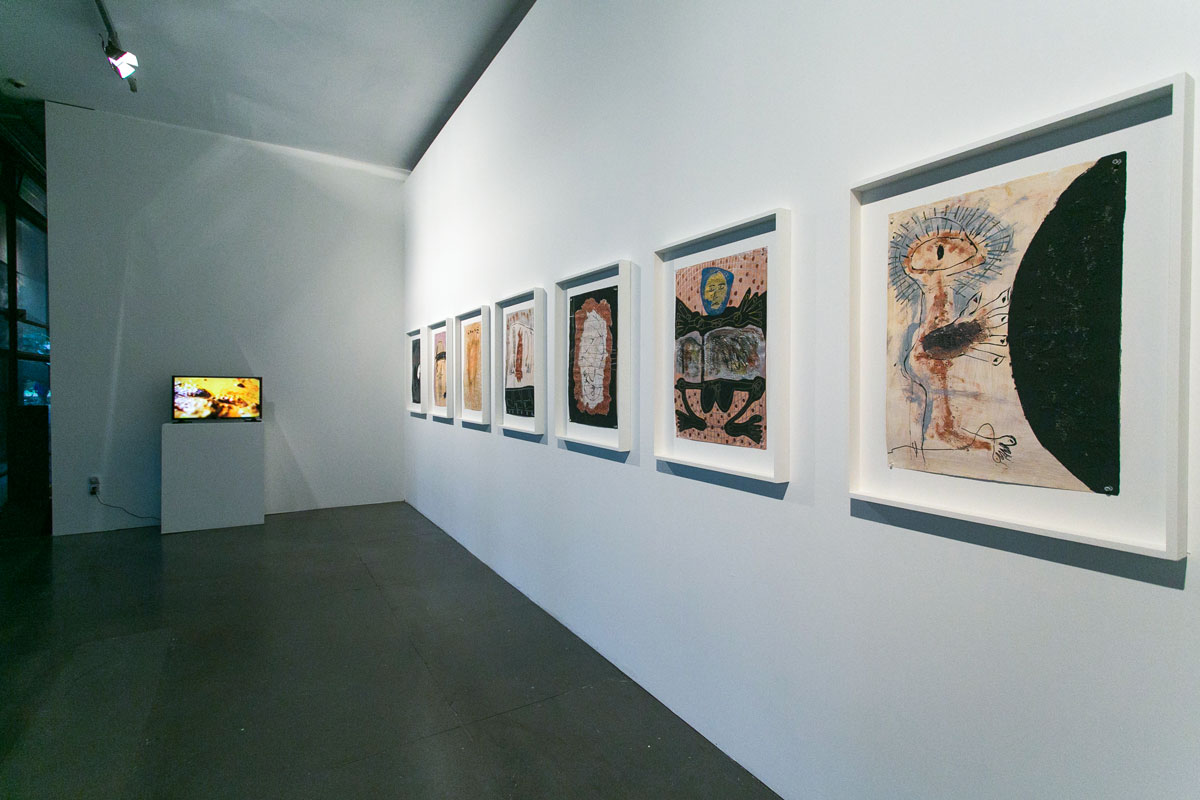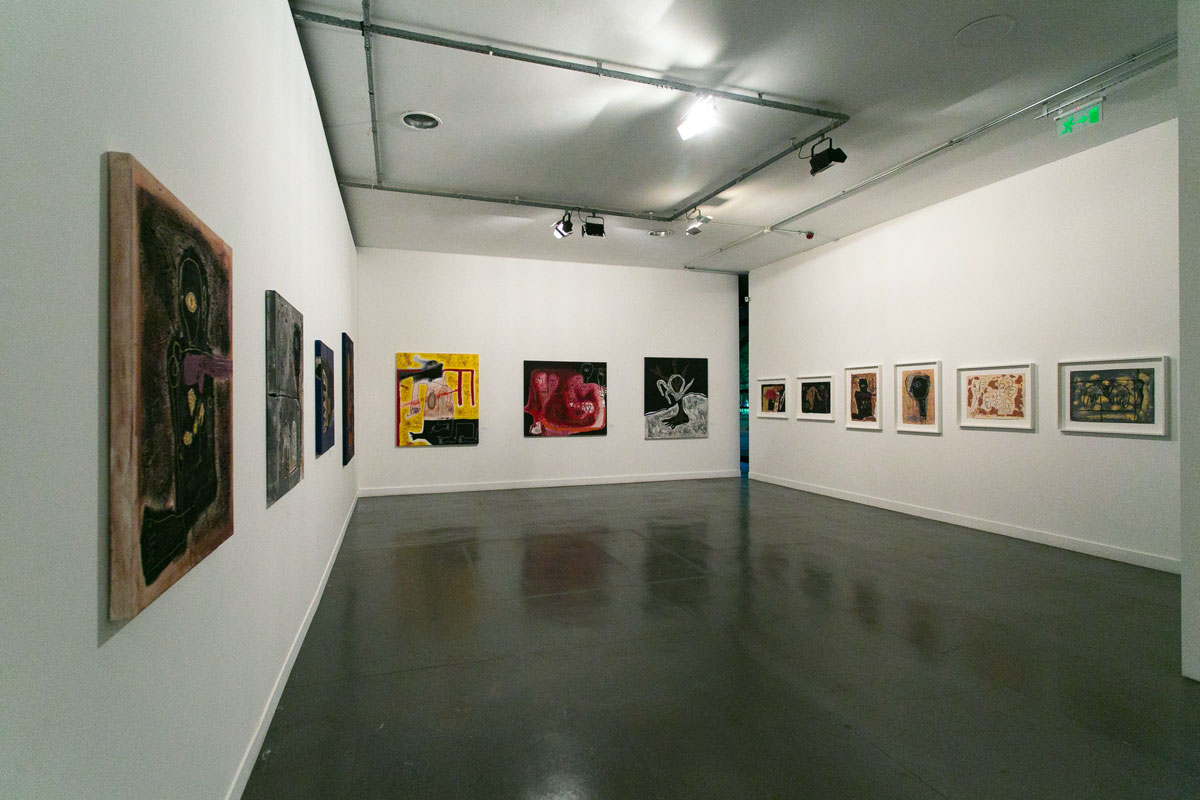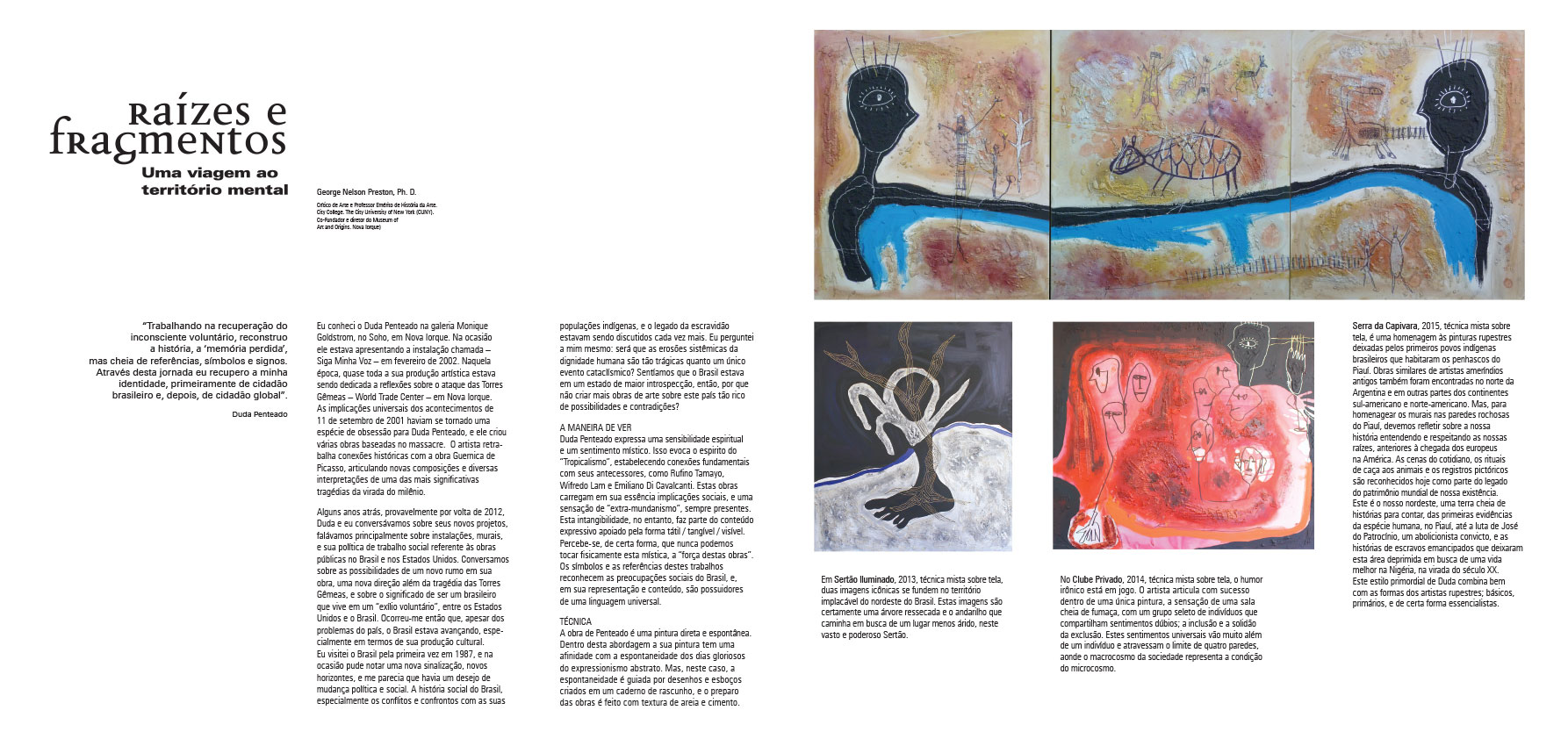



Roots & Fragments at Museu Afro-Brasil, SP
“Working for the recovery of the voluntary unconscious, I rebuild history, the “lost memory “, brimming with references, symbols and signs. Through this journey , I recover my identity, first as a Brazilian citizen and next, as a global citizen.”
Duda Penteado
I first met Duda Penteado at Monique Goldstrom Gallery in Soho, New York where he was exhibiting his art installation called ; Follow My Voice, on February, 2002. At that time almost all of his work was in response to WTC attacks in New York City. The universal implications of the events of September 11, 2001 had become something of an obsession with Duda Penteado, and led him to produce several interpretations of the massacre, while quoting parts of Picasso’s Guernica in order to assemble compositional structures for several versions of one of the most significant tragedies of the turn of the millennium.
Few years ago, probably around 2012, Duda and I were having a conversation about the nature of his on-going projects –mostly public art works in Brazil and USA. We talked about the possibilities of a new turn in his work, in a new direction away from WTC tragedy. We talked about what it means to be a Brazilian living between the United States and Brazil; the meaning of being a Brazilian with a perspective on Brazil from a Northern place –and of course as a Brazilian. It occurred to me that in spite of the country’s troubles Brazil was moving forward, especially in terms of social culture. I had first arrived in Brazil in 1987 so I was aware of how its social culture was changing. The social history of Brazil, especially the conflict ridden confrontations with its indigenous populations and the legacy of slavery was being discussed increasingly more open. I asked aren’t systemic erosions of human dignity as tragic as a single cataclysmic event? We felt that Brazil was in a greater state of introspection than ever before. Why not make more art works about Brasil?
The Way of Seeing
A spiritual sensibility and mystical sentiment are part of the subject matter of Penteado’s work. This evokes that ‘Tropicalismo’ attendant in the work of predecessors such as Rufiño Tamayo and Wifredo Lam, Emilio and Lito Cavalcanti. These are ‘engagé’ paintings because of their social implications but the feeling of extra-worldliness is always prescient. This intangibility, however, is part of the expressive content and supported by the tangible/tactile/visible form. One senses, but can never physically touch the mystical/spiritual aura of these works. There is reference in these works of art which acknowledges social concerns of Brazil. But the representation of the local contexts and personae of these paintings share a universality.
Technique
Penteado’s application of paint is direct and spontaneous. The approach has an affinity to the way paint was applied to the canvas during the glory days of Abstract Expressionism. But here the spontaneity is guided by prepared sketches on drawing pads and the arrangement of sand and cement on the canvas.
George Nelson Preston, Ph. D.
Art Critic & Emeritus Professor, Art History, City College of CUNY
Co-Founding Director, Museum of Art and Origins, NYC.


